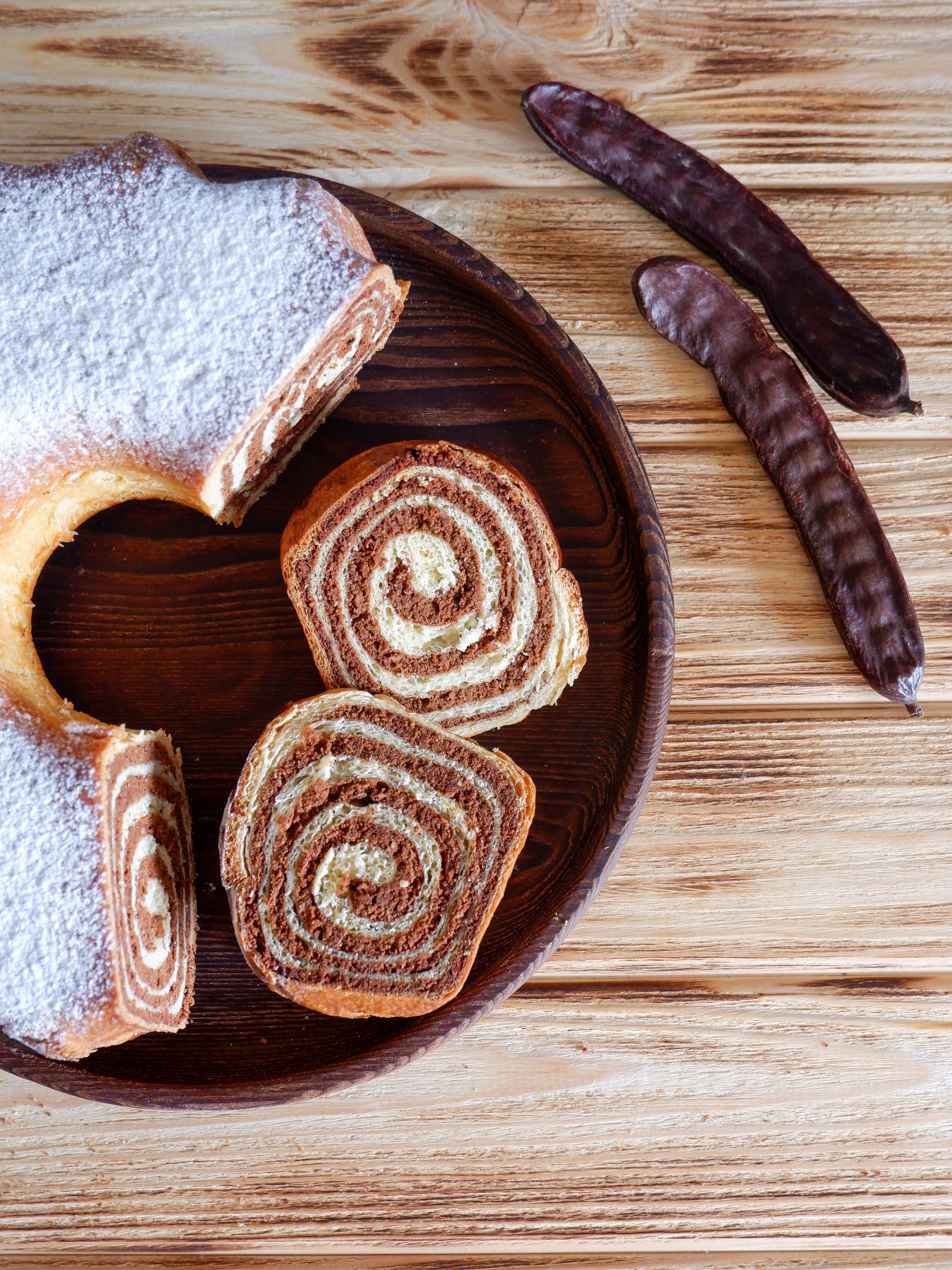Carob Potica
In this potica recipe, the filling is made from carob. Back in former Yugoslavia, it was very easy to get carob (they were grown in Croatia in huge quantities) and it was cheaper than walnuts. For this reason, the carob potica often replaced the walnut potica, including in my father's family. He also mentioned that as a child, he would always get carob and mandarins as a special treat for Saint Nicholas day in December. To learn more about potica, read Is it pizza? No, it’s potica!.
Recipe
Ingredients for a potica baked in a potičnik of diameter around 24 cm:
Dough
400 g flour
7 g instant yeast
80 g butter
60 g sugar
2 egg yolks
170 ml warm milk
1 tbsp rum
zest of 1 lemon
1 tsp vanilla paste (can be substituted with vanilla essence)
a pinch of salt
1 egg for the egg wash
Carob Filling
335 g ground carob*
80 ml milk
100 g sugar
1 tsp cinnamon
2 egg whites
2 tbsp mascarpone or sour cream
15 g butter
1 grated apple
zest of 1 orange or 1 tsp of orange blossom water (optional)
*carob powder is not a good substitute for ground carob. The brand that I use is Šafram's ground carob (rogac mljeveni).
Instructions:
Dough
In a bowl, combine flour and yeast.
Heat the milk, sugar, and butter in a sauce pan until butter is melted.
Add lemon zest, rum and vanilla to the milk mixture and stir well.
Once the milk mixture is sufficiently cool, add 2 egg yolks and mix.
Add the milk mixture to the flour mixture and knead by hand or using a mixer until the dough is soft and elastic. It should not stick to your hands. Cover with plastic wrap and let rest in a warm place until the dough has doubled in size (about 60 minutes).
Filling
For the filling, bring milk and sugar to a simmer in a sauce pan.
Pour the milk mixture over the ground carob.
Add cinnamon, mascarpone, butter, orange zest and apple, and mix well.
Beat the egg whites to stiff peaks. Slowly fold the whipped egg whites into the carob mixture. If the mixture is too thick, add some milk. If the mixture starts to become runny as you add the whipped egg whites, stop adding them.
Making potica
Heat the oven to 180 C (360 F). Traditionally, potica is baked in a ceramic pan called potičnica. If you have it, fill it up with water and place it into the oven until the water is boiling (this way potica does not dry up too much during baking). If you do not have it, you can use a bundt cake pan. Butter potičnica or a standard bundt cake pan well.
Dust the working area with flour. I usually roll out the dough on a tablecloth so it does not cool down too much during rolling.
Roll the dough into a 40 cm x 35 cm rectangle (depending on the size of your pan) about 0.5 cm thick. Spread the carob filling in an even layer over the dough.
- Roll up the dough by hand, stretching it slightly with each roll. Seal the ends securely by gently pulling dough down to cover ends.
- Transfer the potica roll to the prepared pan so that the seam is looking upward (this way it will not be visible once potica is taken out of the pan). In order for the rolled up dough to fit, we might need to cut the ends. These ends can be baked separately.
- Prick the potica with a toothpick to eliminate air pockets and let rise in a warm place for about 30 minutes.
- Bake the rolls for about 20-25 minutes until golden brown while potica is rising.
- Gently brush the potica with an egg wash.
- Bake for an hour. After 30 minutes cover the potica with aluminum foil, so that the top won't brown too much.
- Leave potica in the mold to cool down before taking it out.
- Sprinkle with powdered sugar and serve!
The leftover carob rolls sprinkled with powdered sugar.







